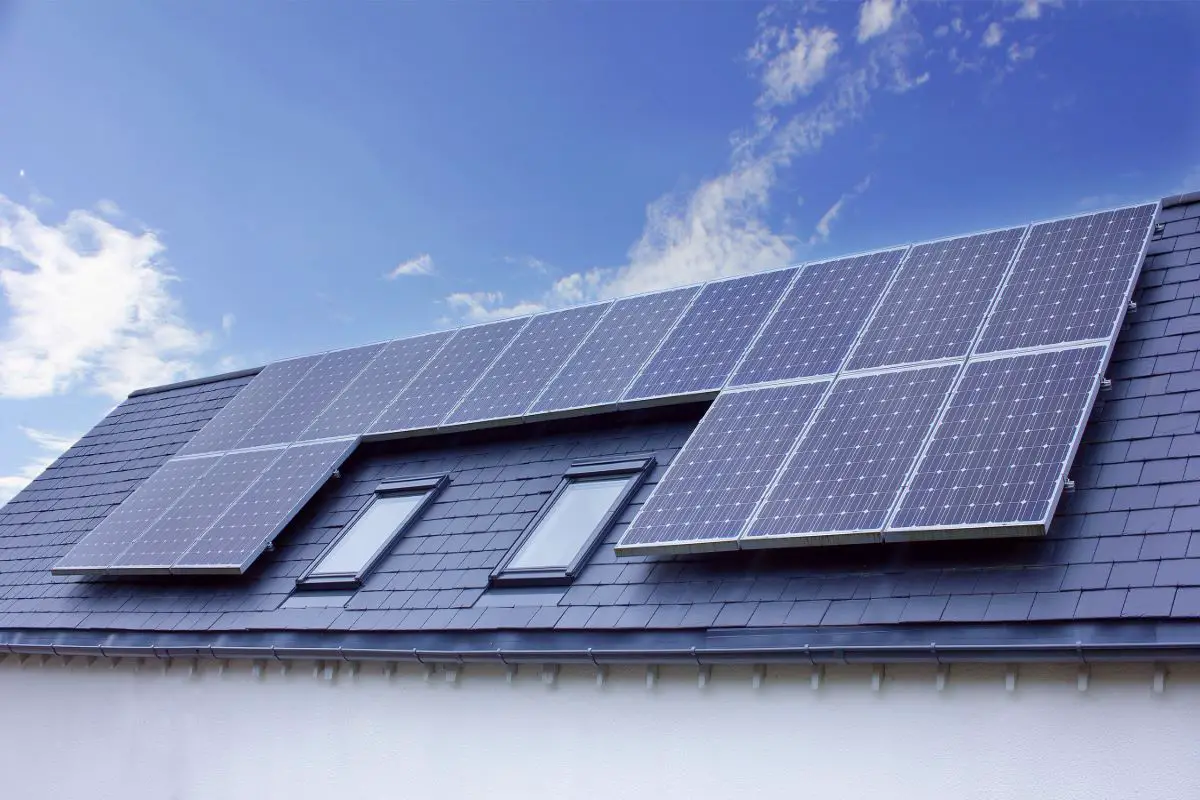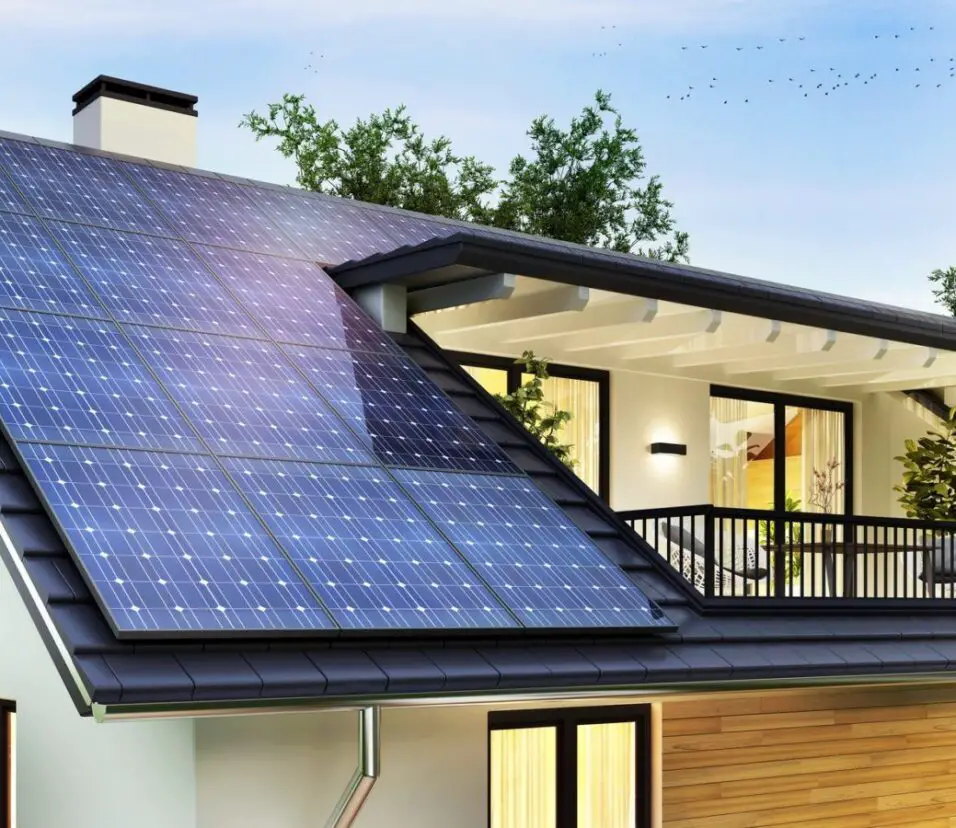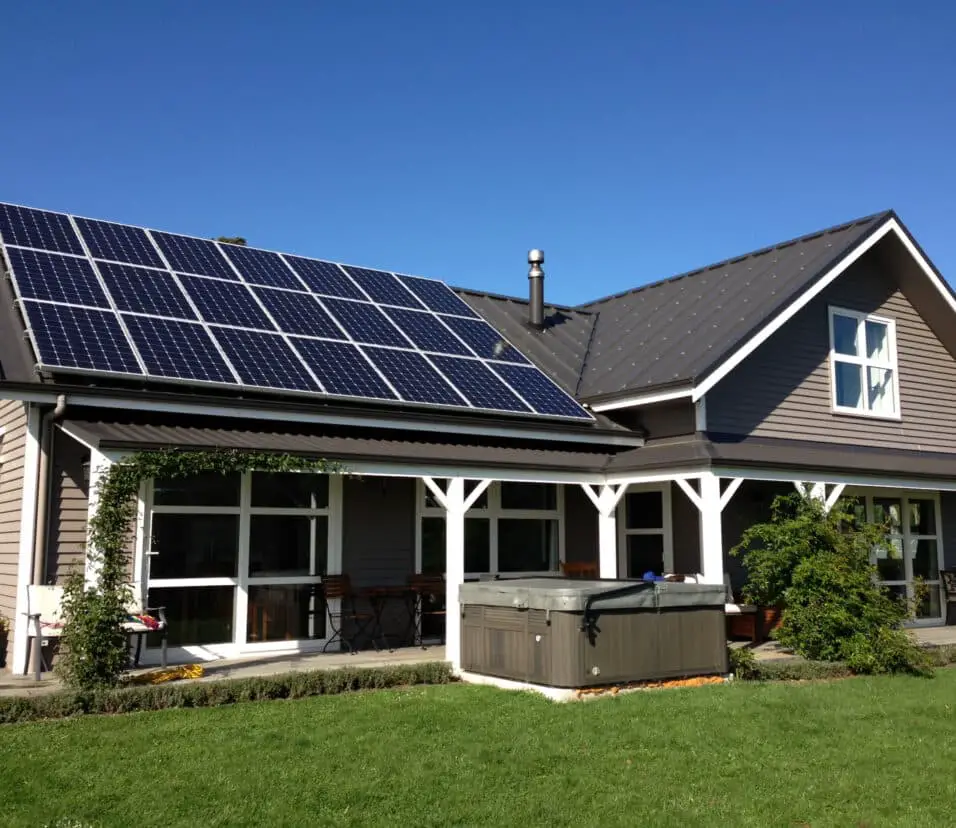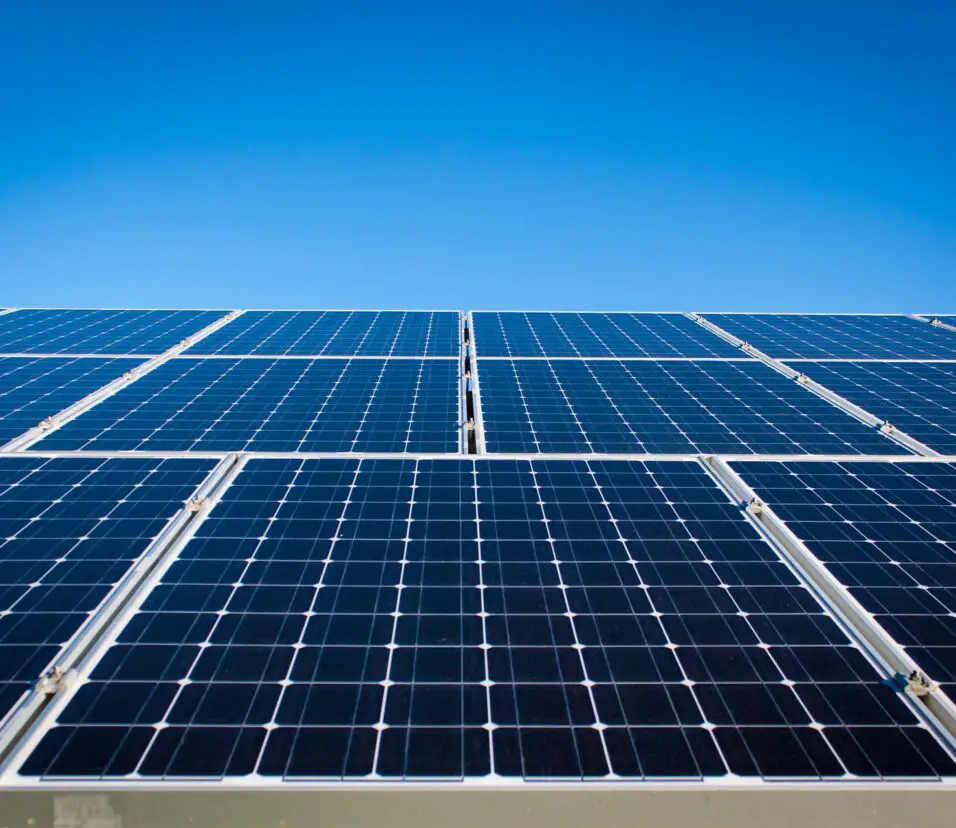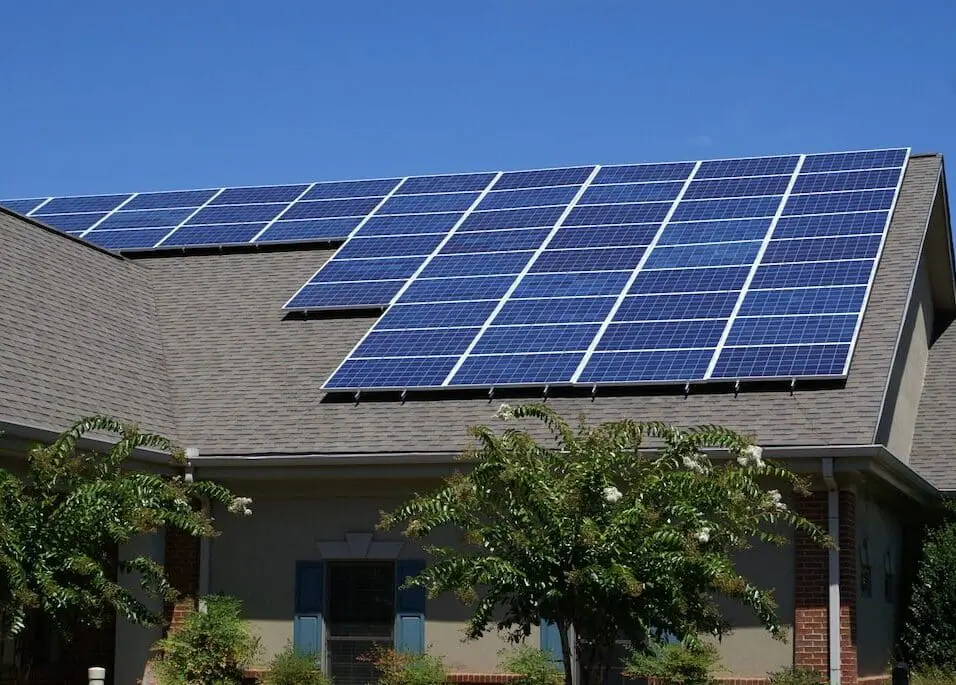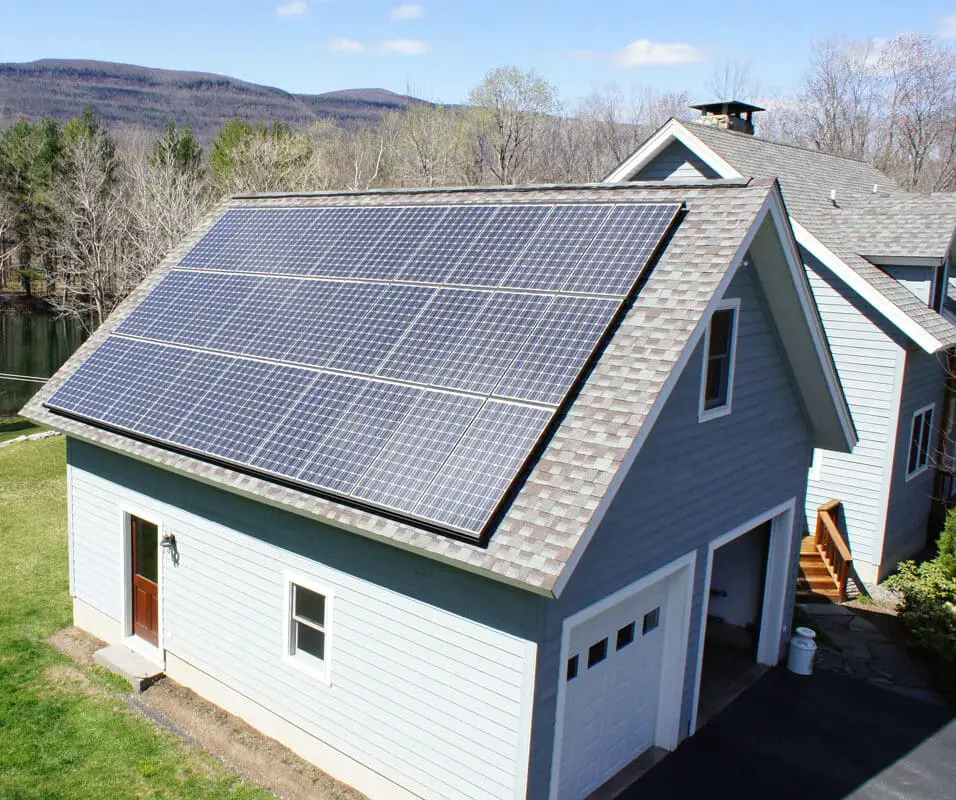How Do Solar Panels Work On A House
Introduction
How Do Solar Panels Work On A House: The structure of the photovoltaic cell is engineered to create an electric field that drives these excited electrons in a specific direction. This electric field acts as a one-way street, pushing the electrons toward a metal conductor on the surface of the solar cell. This movement generates a flow of electrons, creating a direct current (DC) of electricity.
However, the electricity generated by a single solar cell is relatively small. To produce enough power to meet household needs, multiple solar cells are connected together to form a solar panel. These panels are then mounted on the roof of the house or in an area with maximum exposure to sunlight.
During sunny days when solar panels produce more electricity than the house needs, the excess power can be sent back to the grid, and in some cases, homeowners can even earn credits or financial incentives for the surplus energy they contribute. On cloudy days or during the night, when the solar panels aren’t producing enough electricity, the house draws power from the grid as usual.
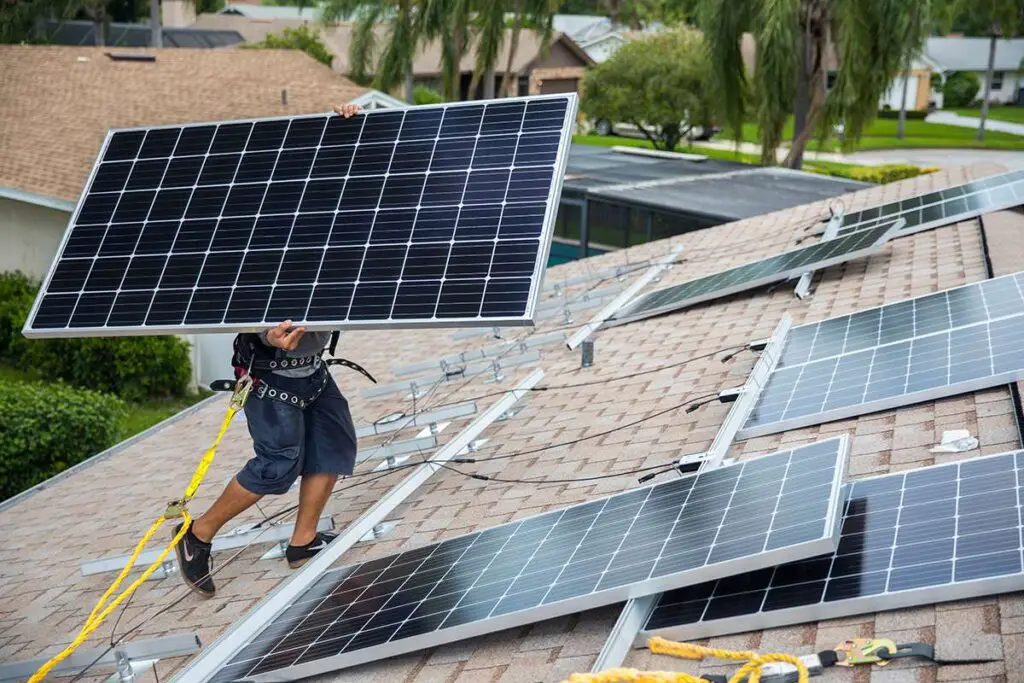
How many solar panels are needed to run a house?
The first step in determining the number of solar panels needed is to assess the household’s energy consumption. This involves examining past electricity bills to understand the average kilowatt-hours (kWh) used per day or month. By knowing the energy consumption, you can estimate how much electricity the solar panels must generate to cover the house’s needs.
Sunlight Availability and Location
The amount of sunlight a location receives is a critical factor in solar panel efficiency. Regions with more sunlight tend to generate more solar energy, while areas with frequent cloud cover or limited direct sunlight will produce less. Additionally, the geographical location and tilt of the solar panels also influence their efficiency. For instance, houses located in sunnier regions with south-facing rooftops generally have higher solar potential.
Solar Panel Efficiency and Wattage
Solar panels come in various wattages and efficiencies.
Calculating the Solar Panel Array Size
This involves dividing the average daily energy consumption (in kWh) by the peak sun hours available in the area. Peak sun hours are the hours in a day when sunlight is most intense and favorable for solar energy production.
Do solar panels work at night?
The short answer is: no, solar energy systems only operate during the day. This is because the power from the sun is key to how a solar panel turns light into electricity.
Solar panels function based on the photovoltaic effect, which is the process of converting sunlight into electricity. When sunlight strikes the photovoltaic cells within the solar panels, it excites electrons, generating a flow of electric current. This direct current (DC) can be converted into alternating current (AC) through an inverter to power household appliances and electrical devices.
No Sunlight, No Electricity
During nighttime, the sun is not shining on the solar panels, and as a result, they do not receive any sunlight. Without sunlight, the photovoltaic cells cannot generate electricity. Therefore, solar panels are not operational during the night.
Drawing Power from the Grid
To ensure continuous electricity supply during the night and periods of low sunlight, most residential solar energy systems are connected to the electrical grid. When solar panels are not producing electricity, the house draws power from the grid as usual. This ensures that the household’s energy needs are met even when solar energy generation is not possible.
Using Energy Storage Systems
An alternative approach to meet nighttime electricity demands is through energy storage systems, commonly known as solar batteries. These batteries store excess electricity generated during the day by the solar panels.
When the sun sets, the stored energy is utilized to power the house, reducing the need to rely solely on the grid. Energy storage systems offer greater energy independence and allow homeowners to make the most of the electricity generated by their solar panels.
How much solar panel required for ac?
However, as a general rule of thumb, we recommend getting roughly 10 panels, each having a wattage of around 250 watts. It is advisable to install 6 solar panels with 250 watts each for a 1-tonne AC.
The first step is to determine the AC’s power consumption, which is typically measured in watts or kilowatts (kW). This information can usually be found on the AC’s nameplate or in the user manual. For instance, if the AC consumes 1.5 kW per hour, and you plan to run it for 8 hours daily, the total daily energy consumption would be 1.5 kW x 8 hours = 12 kWh.
The amount of sunlight your location receives is a crucial factor in determining the efficiency of solar panels. Areas with more sunlight will allow solar panels to generate more electricity, while regions with frequent cloud cover or limited direct sunlight may reduce their efficiency.
Solar panels come in various efficiencies. Higher efficiency panels can convert a larger percentage of sunlight into electricity, meaning fewer panels may be needed to meet the AC’s energy demands. Efficiency is typically expressed as a percentage, and modern solar panels often have efficiency ratings ranging from 15% to 20%.
To determine the solar panel capacity required, you need to consider both the AC’s daily energy consumption and the solar panel efficiency. Divide the total daily energy consumption of the AC (in kWh) by the average daily peak sun hours available in your location. Peak sun hours represent the hours in a day when solar panels receive the most intense sunlight and are most efficient in converting it into electricity.
Do solar panels work in winter?
Even in below-freezing weather, solar panels turn sunlight into electricity. That’s because solar panels absorb energy from our sun’s abundant light, not the sun’s heat. In fact, cold climates are actually optimal for solar panel efficiency.
Solar panels work by converting sunlight into electricity through the photovoltaic effect. During the winter months, the days are generally shorter, and the sun’s angle is lower in the sky, leading to reduced daily sunlight hours and less intense sunlight. While this means that solar panels receive less direct sunlight, they can still harness diffuse and indirect sunlight to generate electricity.
Interestingly, cold temperatures can actually benefit solar panel efficiency to some extent. Solar panels become more efficient at converting sunlight into electricity in colder temperatures. High temperatures can cause a slight reduction in efficiency, so in colder climates, the panels may perform slightly better during winter than in the height of summer.
On clear winter days, solar panels can be highly productive, even with lower temperatures. Snow-covered ground can also enhance sunlight reflection, potentially increasing the amount of light reaching the panels. Additionally, snow that accumulates on solar panels will eventually slide off due to their tilted design, ensuring continued energy production.
However, it’s important to note that excessive snow buildup on solar panels can temporarily hinder their performance. In regions with heavy snowfall, it may be necessary to clear the snow from the panels to maintain their efficiency. Homeowners can do this manually with gentle snow removal tools or opt for self-cleaning panels, which are designed to reduce snow buildup automatically.
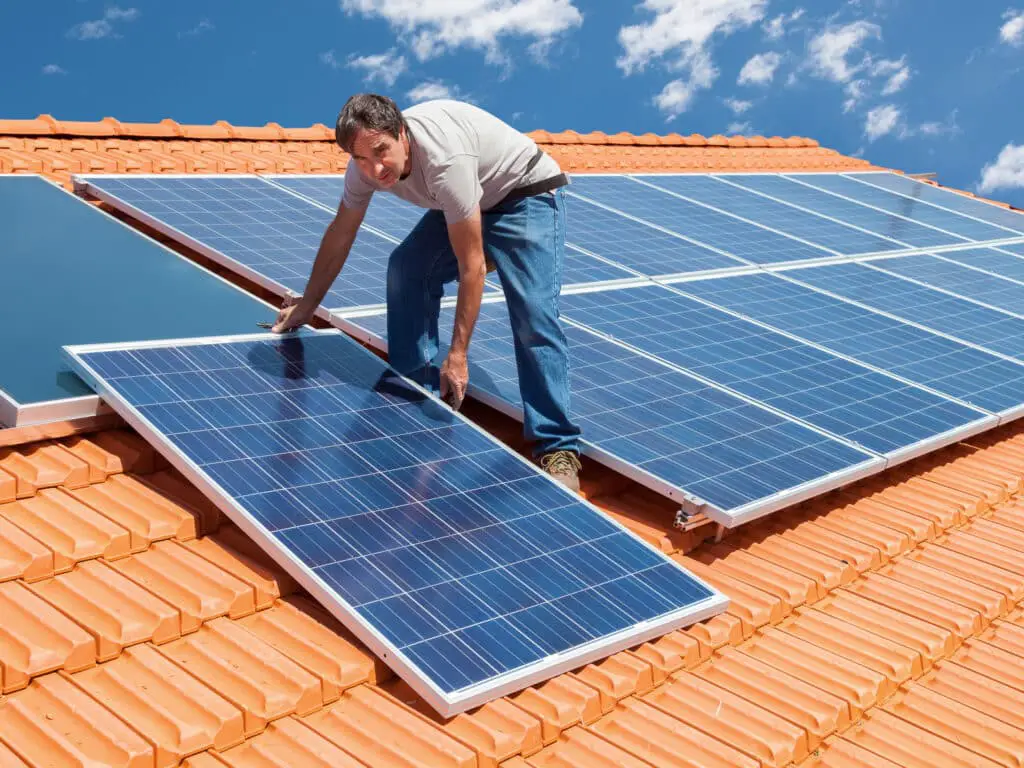
How does solar panels turn into electricity?
Solar panels absorb sunlight through PV cells. Electricity flows because this energy forms electrical charges that move in response to a cell’s electrical field.
Photovoltaic cells, mainly silicon, make up solar panels. The substance on these cells absorbs sunlight. Electrons in semiconductor atoms receive energy from photons. Photons excite semiconductor atom electrons, forming “electron-hole pairs.” Electrons become negatively charged, while holes become positively charged.
Different materials in semiconductor layers provide a particular internal electric field in solar panels. This one-way electric field pushes unbound electrons and holes toward opposite sides of the cell. The internal electric field pushes free electrons toward the solar cell’s metal conductor-coated front surface. This grid-patterned conductor lets electrons flow.
Do solar panels need maintenance?
Solar panels typically don’t require much maintenance other than periodic cleaning and keeping them free from obstacles that can cast shadows over the panels. Solar panels need an unobstructed path to the sun to operate optimally.
Dirt, dust, pollen, bird droppings, and other debris can accumulate on the surface of solar panels over time, reducing their ability to absorb sunlight. Periodic cleaning is necessary, especially in dusty or pollen-prone areas. Cleaning can be done using a soft brush or a hose with a gentle stream of water. In some cases, rainwater may be sufficient to wash away light dirt.
Ensuring that solar panels receive maximum sunlight is crucial for their efficiency. Regularly check for any nearby objects or structures that might cast shadows on the panels during peak sun hours. Trimming overhanging branches and removing any potential obstructions can help maintain consistent sunlight exposure.
Periodically inspect the solar panels for signs of physical damage, such as cracks, chips, or delamination. Damaged panels may not perform optimally and can lead to energy production issues. If any damage is detected, contact a professional for repairs or replacement.
Loose or damaged electrical connections can hamper the efficiency of the solar panel system. It is essential to inspect the wiring and connections regularly to ensure they are secure and free of corrosion.
Do solar panels make noise?
The short answer is: technically, no. Solar panels themselves emit little, or really any noise. They don’t have any moving parts that turn or churn to make any kind of noise. Once installed, they’re there to take in sunlight and convert it all to energy.
Solar panels are solid-state devices with no moving parts. The photovoltaic cells within the panels convert sunlight directly into electricity through the photovoltaic effect, as previously explained. As there are no mechanical components involved, there is no vibration or mechanical noise associated with their operation.
Silent Energy Conversion
The energy conversion process in solar panels occurs silently within the semiconductor material. When sunlight strikes the cells, electrons are excited, generating an electric current. This electron movement happens at the atomic level and does not create any audible sound.
Contrast to Other Energy Sources
Solar panels stand in stark contrast to other conventional and renewable energy sources that do produce noise during their operation. For example, fossil fuel-based power plants with turbines or generators emit mechanical noise from rotating components. Similarly, wind turbines generate noise from the movement of their blades.
Do solar panels always produce electricity?
Even though maximum efficiency is reached when the sun is shining, electricity is still produced on cloudy days and during winter. On the other hand, no electricity can be produced at night, but a storage system can solve this problem.
Solar panels rely on sunlight to generate electricity through the photovoltaic effect. As long as sunlight is available, solar panels will continuously produce electricity during daylight hours. However, solar panels cannot generate electricity during the night, when the sun is not shining.
Weather plays a significant role in the efficiency of solar panels. Cloudy or overcast days reduce the amount of sunlight reaching the panels, resulting in lower electricity production. Rain, snow, and heavy cloud cover can further impact solar panel performance by diffusing or blocking sunlight.
The angle and orientation of solar panels relative to the sun affect their energy production. Solar panels are most efficient when they face the sun directly. In some regions, solar panel arrays are mounted on tracking systems that follow the sun’s movement throughout the day, optimizing their exposure to sunlight.
Seasonal changes in the sun’s position in the sky can affect solar panel output. During the winter months, the sun’s angle is lower, resulting in shorter daylight hours and potentially reduced energy generation. Conversely, summer months with longer days and higher sun angles may lead to increased electricity production.
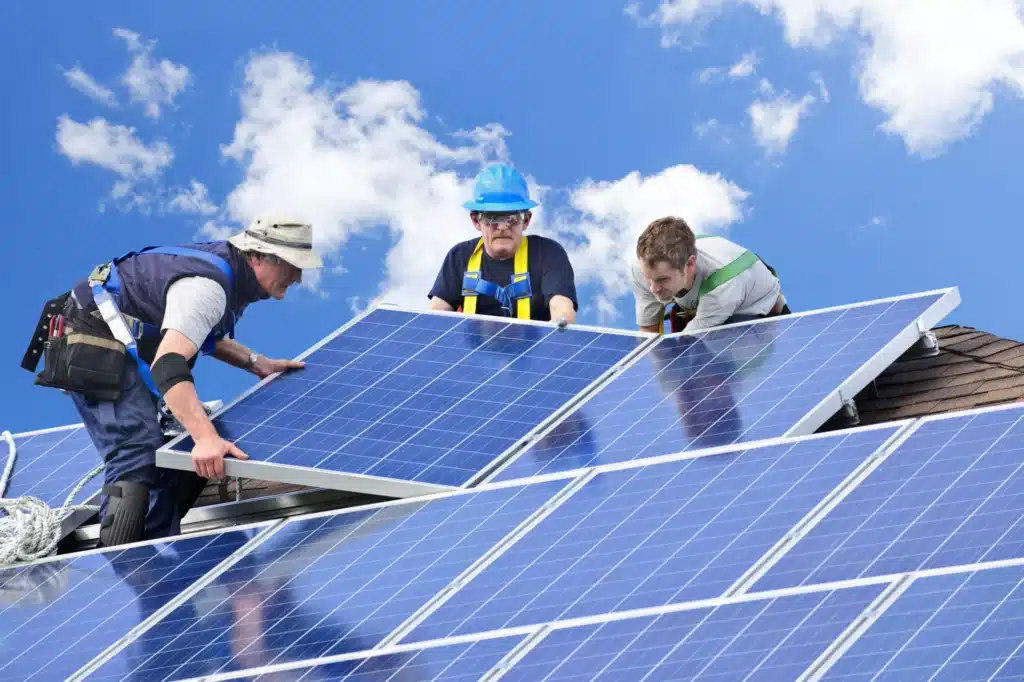
Conclusion
By harnessing the power of the sun, solar panels offer numerous benefits to homeowners. They provide a renewable energy source that is abundant and freely available, thereby lowering carbon emissions and contributing to a greener future. Additionally, investing in solar panels can lead to substantial long-term savings on energy bills, as well as potential financial incentives from selling surplus energy back to the grid.
Moreover, as technology continues to advance, solar panels become more affordable, efficient, and accessible to a broader range of homeowners, making sustainable energy an increasingly viable option for communities worldwide. Solar panels work have proven to be a game-changer in the realm of renewable energy. As technology advances, the efficiency and affordability of solar panels continue to improve, making them an increasingly popular and accessible option for homeowners worldwide.
Embracing solar energy is not just a responsible choice for individual households; it is a collective step towards addressing global energy challenges and combating climate change. As solar panels grace rooftops and landscapes across the globe, they represent a symbol of hope and progress in our journey towards a cleaner, more sustainable world.



